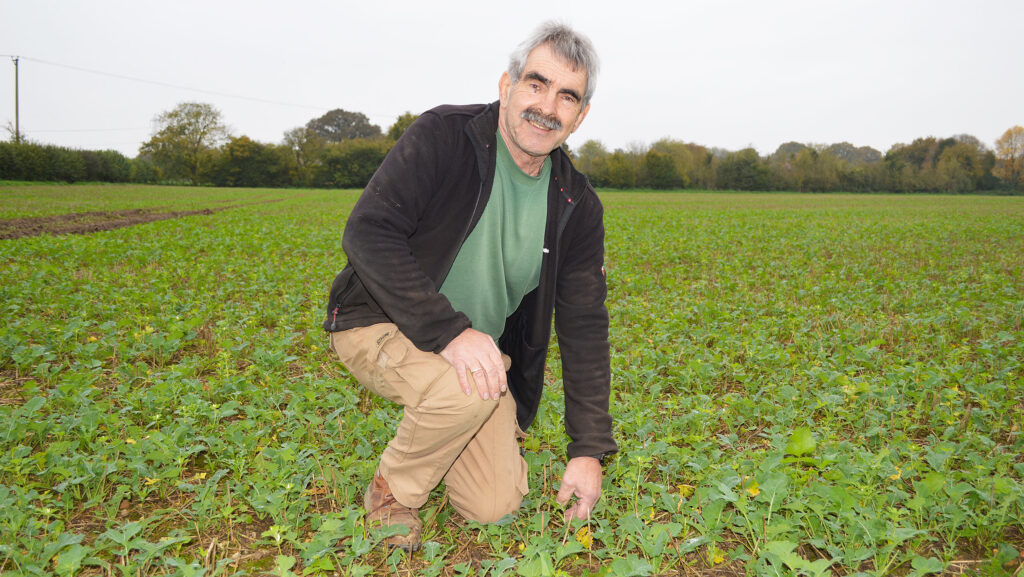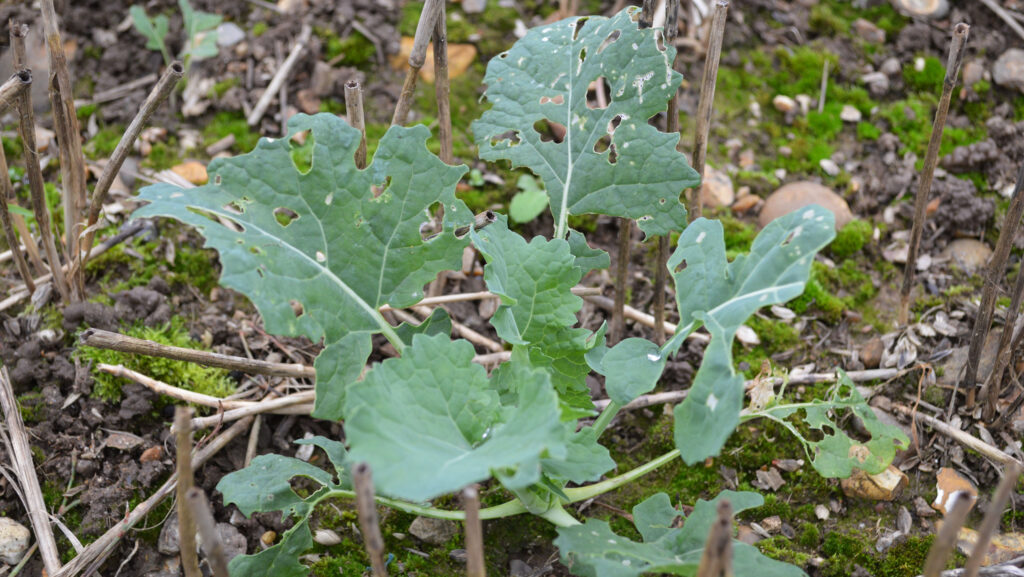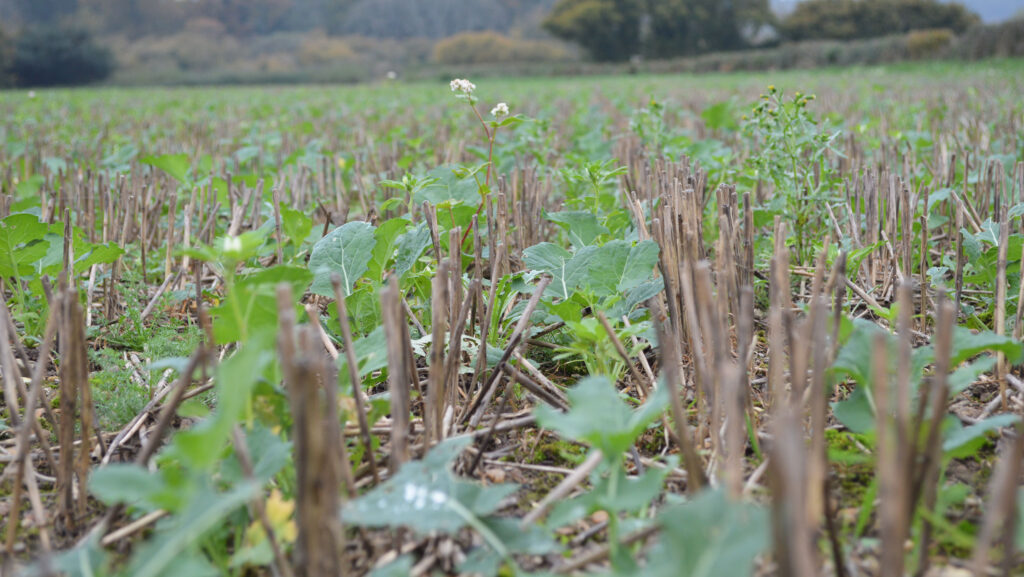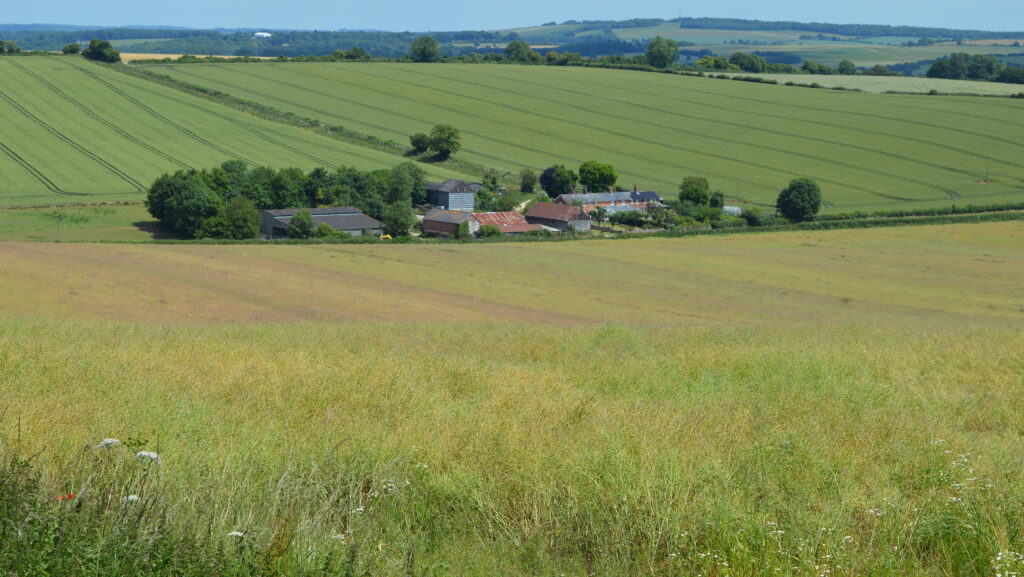Drilling regime and companion crop achieve high OSR yields
 © David Jones
© David Jones Farm manager David Northway’s oilseed rape harvest hit a top yield of 5t/ha in the summer, his highest for nearly 50 years.
This was achieved on the farm between Fordingbridge and Salisbury in the River Avon valley using a three-pronged focus.
This consisted of direct drilling, companion cropping and late drilling to counter pest damage.
See also: How to spot stem weevil in oilseed rape and manage it

David Northway © David Jones
Three-point approach
David will also gain £128/ha for his no-tillage and twin-cropping approach from environmental payments for a crop that compares well with top-quality milling wheat as his most profitable.
Rapeseed yields in the summer were further boosted by applying a pod stick 10 days before desiccation.
This left more seed in the pods rather than spilling to the ground before and during combining.
The ground was virtually clean after harvest in areas where the pod stick was applied as a separate spray before glyphosate desiccation.
Where the pod stick was included in a glyphosate mix, there was a green mulch from germinating rapeseed.
“It was quite an eye-opener. We saw that the early separate pod stick application led to extra yield and lower losses from the crop,” David says.
This was his third harvest using his three-point approach. Yields have averaged 4t/ha at Breamore Estate, with the crop protected from serious cabbage stem flea beetle attacks.
His top yield of 5t/ha from two fields was nearly twice the national average, despite David drilling relatively late in early September.
Defra provisional figures put English oilseed rape yields for the 2024 harvest at a lowly 2.8t/ha.
The direct drilling-companion, crop-late drilling approach allows the oilseed rape seed to find moisture in relatively undisturbed soil.
It also gives some protection from flea beetles under a companion crop and emerges in mid-September onwards when the main flea beetle migration period has passed.
Drilling in early September after the cereal harvest is finished fits in well on the estate, which has a limited workforce.
David is happy to drill to the end of September as this area of southern England has mild autumns.

© David Jones
Yields
Last season, David grew 106ha of oilseed rape on the estate’s light soils, which range from gravelly sands by the River Avon to chalky, flinty loams on higher ground stretching towards Dorset in the West.
This season, he has drilled a similar area, and it was on the riverside gravels that David saw his top yields of 5t/ha from the hybrid variety Excited.
“The crop looked good all year. It was on gravelly ground, which can be droughty, but not after the wet spring,” he adds.
Overall, oilseed rape yields in summer 2024 ranged from 3.4-5t/ha, with an average of 4t/ha. Returns were further boosted by oil contents as high as 46% to secure healthy oil bonuses.
When Farmers Weekly visited the estate in June, the farm’s oilseed rape crops looked promising.
There was relatively little flea beetle damage, with the farm on course to rival the profitability of milling winter wheat variety Crusoe with its average yields of 8.25t/ha.
Oilseed rape is key on the farming estate, being the only true break crop in 550ha of arable land growing winter wheat, winter and spring barley and spring oats, within a 1,400ha estate which includes woods and parkland.
The 2024 oilseed rape crop was harvested between 18-24 July, with half the crop down to the hybrid variety Excited from Bayer’s Dekalb range, and the rest in other hybrids and a variety trial field.

© David Jones
Pod stick
It was this variety trial field that gave David the idea of an early pod stick spray to try and even up results from a range of different maturing varieties.
“We were growing 11 varieties with Bayer and the idea was to make sure the early varieties were not shedding seed,” he says.
Roughly 40% of the farm crop, including the trial field, was treated with the pod stick Iskay some 10 days before the glyphosate with a contractor’s high-clearance sprayer, and following up with another pass of the glyphosate. The trial field yielded 4.5t/ha.
The remaining oilseed rape area had pod stick and glyphosate applied at the same time in one application.
The pod sticker is designed to prevent pod shatter by coating the crop with a thin film of polymer holding brittle pods together to prevent shattering, with sufficient elasticity to allow for the final stages of pod fill.
David believes that the extra contractor spray pass through the crop to apply the pod stick and glyphosate separately was worthwhile as it resulted in about 0.5t/ha extra yield, worth £200/ha before oil bonuses at current prices.
The farm’s establishment method also allows David to claim under the Sustainable Farming Inventive scheme for direct drilling (SOH1) worth £73/ha, and a further £55/ha for companion cropping (CIPM3).

© David Jones
This season
Last season’s crop establishment formula worked well, but David has made some tweeks for this season’s crop, which was drilled between 3-19 September.
He has added fenugreek to the buckwheat companion crop to act as a smell deterrent to ward off cabbage stem flea beetles and pheasants. He also added berseem clover for its deep tap root, which, it is hoped, will encourage oilseed rape roots to follow.
In last season’s variety trial, Exstar, another Bayer variety, came out as the top yielder, so David has switched to drilling 60% of his current crop with this over Excited.
The other 40% is sown with the Limagrain hybrid Adeline.
Exstar is Bayer’s top-selling variety, with very good disease resistance and standing power.
It is particularly rapid to grow away in the spring, which is of interest to David as his crops are often grazed by pheasants over the winter.
He has stayed with clomazone as his preferred pre-emergence herbicide, but has switched to Shogun (propaquizafop) as his post-emergence graminicide.
The farm’s oilseed rape crop looked well established in November, with the late-drilled crop emerging in mid to late September.
This meant it missed the main migration flea beetle period around the August bank holiday.
Oilseed rape crop at Breamore Estate for harvest 2024
Autumn 2023
- Previous cropping Winter wheat or spring barley. Straw baled to try and limit slug damage, and stubble left long at 250mm to deter cabbage stem flea beetles
- Fertiliser Seed-bed fertiliser to supply nitrogen, phosphate and potash
- Sowing Direct drilled with Amazon Cirrus 6m disc drill with twin tanks to drill rapeseed and a companion crop. Drilled in the first week of September and rolled
- Seed rate Oilseed rape at 50 seeds/sq m to aim for 30-35 plants/sq m in the spring, with a companion crop of buckwheat at 10kg/ha
- Weed control Pre-emergence herbicide of Centium (clomazone), a post-emergence spray of graminicide Fusilade (fluazifop) and then Kerb (propyzamide)
- Fungicides/insecticides/plant growth regulators (PGR) Fungicide-PGR Architect (pyraclostrobin fungicide + PGRs mepiquat chloride and prohexadione) along with Cleancrop Corsair (Lambda cyhalothrin) insecticide for cabbage seed weevil larvae. Micronutrients boron and magnesium added.
Spring 2024
- Nitrogen Application of 58kg/ha of coated urea in February and a further 104kg/ha in April. The remaining nitrogen to make up to a total of 190kg/ha was in the seed-bed fertiliser
- Fungicide/PGR Fungicide-PGR Architect used again, along with boron and magnesium in addition to seaweed extract Maerit at stem extension, and then Cleancrop Vulture (prothioconazole + tebuconazole) fungicide as a flowering spray, along with more magnesium.
- Pot stick/desiccation Some 40% of crop treated with Iskay pod stick then glyphosate 10 days later. Other 60% of crop treated with one application of Iskay and glyphosate in the same tank mix
- Harvested yield Average yield 4t/ha, with a range of yields from 3.4-5t/ha.

